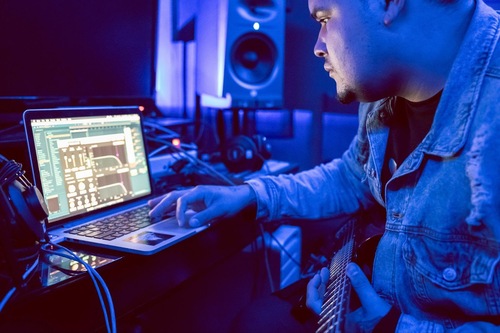It used to take hours, maybe even days, to compose the right track for a video, presentation, or marketing campaign. Those who couldn’t create music themselves had to rely on overpriced libraries or freelancers. But what if that entire process could be reduced to minutes, without compromising on quality? That’s not a hypothetical anymore. It’s real—and it’s reshaping how creators work.
Let’s talk about efficiency. You’ve got an idea, a theme, a storyline. Now you want music that matches. Instead of scrolling through stock options that never quite hit the mark, AI tools let you plug in a mood or concept and watch the soundtrack build itself. It’s not just fast—it’s accurate, responsive, and increasingly nuanced.
That’s what makes using AI to make music in no time such a compelling part of the modern creator’s toolkit. There’s no steep learning curve, no need to be fluent in DAWs or MIDI mapping. These platforms do the heavy lifting, letting users jump straight to the fun part: experimenting, iterating, and fine-tuning until the music fits like a glove.
Speed alone isn’t enough, though. What makes these tools valuable is how good they’ve gotten at emulating human creativity. You’re not just getting a sterile melody. You’re getting layered sounds, harmonic progression, emotional pacing—all generated in response to your input. It’s collaborative in the weirdest, most futuristic sense.
This opens the door for people who’ve never written a note in their life. A teacher building an educational video. A marketer prepping a product teaser. A podcaster looking for an intro theme. Music no longer feels out of reach or intimidating. It’s just another asset you can generate, tweak, and own.
Creative professionals are also jumping in—not to cut corners, but to speed up the foundation work. Need a jazz-inspired loop with lo-fi beats? Done. Want a cinematic buildup for your short film? Generated in a few clicks. The AI provides the sketch, and human producers can color in the lines. It’s a new kind of workflow that emphasizes possibility over process.
What’s even more exciting is the diversity of results. No two prompts yield the same output. That element of unpredictability makes AI composition more than just convenient—it becomes part of the creative journey. Sometimes, the track you didn’t ask for becomes the one you didn’t know you needed.
In fast-paced environments where deadlines rule, having immediate access to custom audio is a game-changer. You can meet last-minute demands with tailor-made music that feels intentional. It’s not just about filling silence—it’s about enhancing message and emotion in real time.
Also worth noting: it’s cost-effective. Commissioning music used to be reserved for large budgets. Now, even small creators and solo entrepreneurs can build out fully-produced audio experiences without burning through funds. That levels the playing field in a major way.
And this isn’t only about tracks for media. Brands are exploring AI-generated soundscapes for events, retail spaces, and immersive digital experiences. It’s a form of identity, mood, and storytelling that doesn’t require traditional musical infrastructure.
At the heart of this shift is accessibility. Anyone with a computer and an idea can make music. AI tools remove friction and unlock creative flow, whether you’re editing a video, launching a game, or just trying to make a Zoom call more engaging.
But it’s not a question of AI versus human—it’s both. AI provides the canvas, maybe some colors, but you choose the strokes. This hybrid process keeps the soul in the music while speeding up the mechanics behind it. Efficiency doesn’t mean soullessness—it means freedom.
So the next time your project needs a little audio magic, consider how far these tools have come. The time you save can be poured into polishing your story, refining your visuals, or exploring new ideas. The result isn’t just quicker work—it’s better work, more aligned with your voice and vision.
Music is emotion, and creators now have a way to access that emotion faster than ever. With the right AI tool, you’re not just listening to what’s possible—you’re making it.



